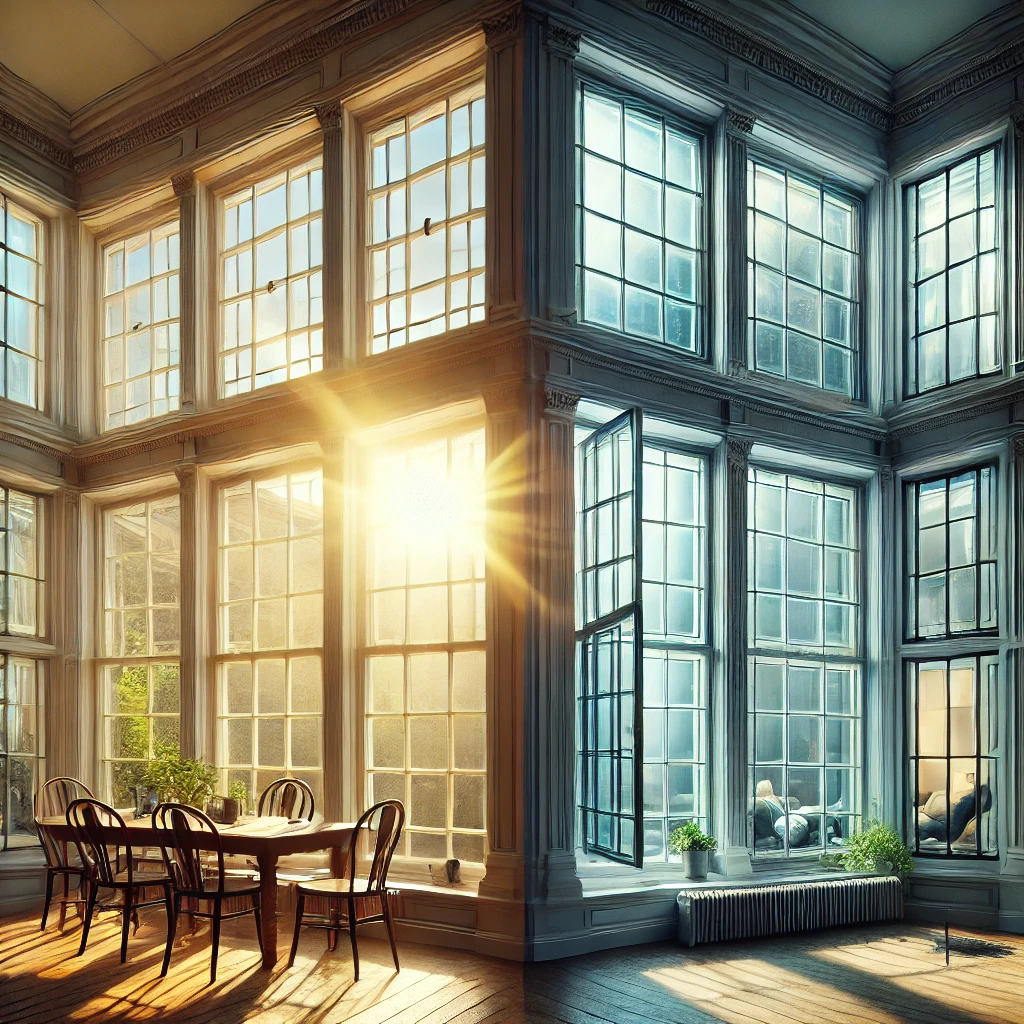
Harnessing the Sun: The Benefits of Solar Control Vacuum Glass in Historic Buildings
Historic buildings represent architectural heritage and cultural importance. Preserving these structures while incorporating modern energy-efficient technologies is a challenge many […]
Historic buildings represent architectural heritage and cultural importance. Preserving these structures while incorporating modern energy-efficient technologies is a challenge many restoration projects face. Solar control vacuum glass offers a perfect solution, providing superior insulation and solar control, making it ideal for heritage buildings. Let’s explore why this advanced glazing technology is essential for heritage projects.
What Is Solar Control Vacuum Glass?
Solar control vacuum glass is a type of vacuum-insulated glazing (VIG) designed to reduce heat gain from sunlight while maintaining strong thermal insulation. The glass is coated to reflect a large portion of the sun’s infrared radiation, which lowers the solar heat gain coefficient (SHGC), meaning less heat enters the building. However, it still allows visible light to pass through, preserving the brightness inside.
Why Is Solar Control Important in Historic Buildings?
How Does Solar Control Vacuum Glass Protect Interiors?
Historic buildings often contain valuable artwork, artefacts, and furnishings that are sensitive to sunlight. Excessive exposure to the sun can cause fading and deterioration. Solar control vacuum glass limits the amount of solar radiation that enters, protecting these precious interiors. This is particularly crucial in museums, galleries, and historic homes, where preserving the interior is as important as preserving the building itself.
Can Solar Control Improve Occupant Comfort?
In buildings with large windows or those that face the sun, excessive heat from sunlight can make indoor spaces uncomfortable. Solar control vacuum glass helps maintain a stable indoor temperature by reducing heat gain, making rooms more comfortable for occupants. This reduces the need for air conditioning, cutting down on energy consumption.
What Are the Benefits of Solar Control Vacuum Glass?
Does Solar Control Vacuum Glass Offer Superior Thermal Performance?
Yes, solar control vacuum glass provides excellent thermal insulation, with a U-value of 0.4 W/m²K. The U-value measures how well a material prevents heat from escaping—lower values mean better insulation. This means that solar control glass helps maintain consistent indoor temperatures, reducing reliance on heating and cooling systems, while preserving the building’s historic look.
How Effectively Does It Reduce Solar Heat Gain?
The solar control coating reduces the SHGC to as low as 0.33, meaning less heat from sunlight enters the building. This lowers cooling costs, making solar control vacuum glass especially beneficial in warmer climates or buildings with a lot of sunlight.
Can Solar Control Glass Maintain Natural Light?
Despite its solar control capabilities, the glass still allows natural light to flood interior spaces. With a visible light transmittance of 53%, buildings remain bright and inviting, ensuring the historic ambiance is preserved.
Does Solar Control Vacuum Glass Provide Sound Insulation?
In addition to its thermal and solar benefits, solar control vacuum glass also helps reduce noise pollution. It has a weighted sound reduction index of 36dB, creating quieter and more peaceful environments within the building.
Is Solar Control Vacuum Glass Durable?
Solar control vacuum glass is designed to last. Its vacuum-insulated design prevents internal condensation and reduces thermal stress, which extends the lifespan of the glazing units. Additionally, the glass requires minimal maintenance, which is crucial for historic buildings, where maintenance can be both costly and disruptive.
Real-World Applications of Solar Control Vacuum Glass
How Have Museums and Galleries Used Solar Control Vacuum Glass?
Museums and galleries in regions with high sunlight exposure have adopted solar control vacuum glass to protect their exhibits. By reducing heat gain while allowing light in, these buildings can maintain optimal conditions for both visitors and collections, all while cutting down on energy consumption.
How Does Solar Control Vacuum Glass Benefit Historic Commercial Buildings?
In historic commercial buildings, retrofitting with solar control vacuum glass has significantly lowered cooling costs and improved the comfort of occupants. The glass’s ability to balance light and heat has made these buildings more sustainable without compromising their original charm.
Conclusion: Why Choose Solar Control Vacuum Glass for Heritage Projects?
Solar control vacuum glass offers an innovative way to modernise historic buildings without sacrificing their character. Its ability to reduce solar heat gain while maintaining excellent insulation and light transmittance makes it the perfect solution for heritage projects. By choosing solar control vacuum glass, you protect valuable interiors, enhance comfort, and improve energy efficiency, all while preserving the architectural integrity of these cultural treasures. This cutting-edge glazing solution not only safeguards the past but also ensures a sustainable future for historic buildings.